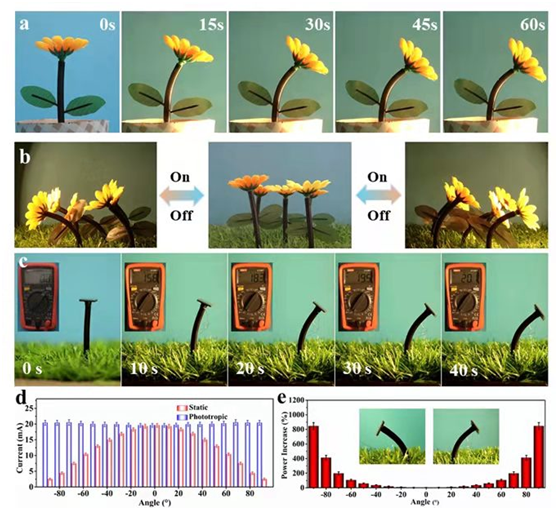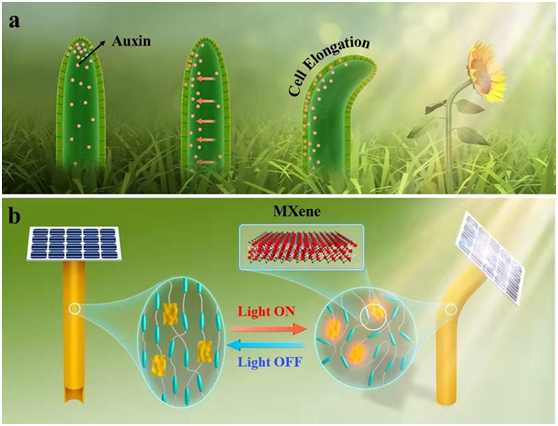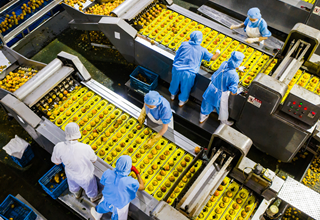New artificial intelligent material developed, mimicking light-tracking sunflowers
Researchers from Tianjin University have developed a bioinspired phototropic MXene-reinforced soft tubular actuator that can boost the development of somatosensory soft robotics and adaptive optoelectronics.
This sunflower-like artificial intelligent material has long interested researchers and engineers because of its high light-tracking accuracy, quick sensing, continuous tracking.
But today’s artificial phototropic systems suffer from at least one of the following limitations: high actuation power, weak mechanical properties, and/or inadequate light-tracking capability in 3D space.

Biomimetic sunflowers and adaptive photovoltaic systems based on MXene-LCE soft tubular actuators
Now, researchers at the School of Materials Science and Engineering of Tianjin University led by Professor Feng Wei have designed and prepared a bioinspired phototropic MXene-reinforced liquid crystal elastomer (LCEs) soft tubular actuator with omnidirectional self-orienting capability.
LCEs exhibit multiple advantageous features, including multi-stimuli responsiveness, muscle-like mechanical properties, and large and reversible actuation, as well as programmable shape-morphing performance, which gives it wide range of applications beyond materials.
In addition, the polymerizable MXene nanomonomer endows the LCE soft tubular actuator with fast photothermal actuation and enhanced mechanical properties.
The study could thereby not only provide new insights into the soft-matter-based self-regulatory intelligence via built-in feedback control, but also open up new avenues toward the development of adaptive optoelectronics, self-regulating optics and photonics, advanced solar harvesters, as well as intelligent soft robotics and somatosensory soft machines.

Schematic illustration of the phototropic mechanism and adaptive photovoltaics
The success of this study is credited to the combination of the gift of nature and cutting-edge technology.
Many plants in nature are capable of self-adapting to the constant changes of the surrounding sunlight and maximizing solar energy harvesting by self-orienting their leaves or flowers.
Phototropism commonly observed in many plants (e.g., sunflower—as a typical representative) is a promising adaptive actuation system with self-regulatory capability.
"As a proof-of-concept demonstration, we prepared a ‘biomimetic phototropic sunflower’ that can adapt to a changing unconcentrated light source,” Professor Feng said.
The research result was published on the journal Advanced Functional Materials.

Copyright © Tianjin Municipal Government.
All rights reserved. Presented by China Daily.
京ICP备13028878号-35



